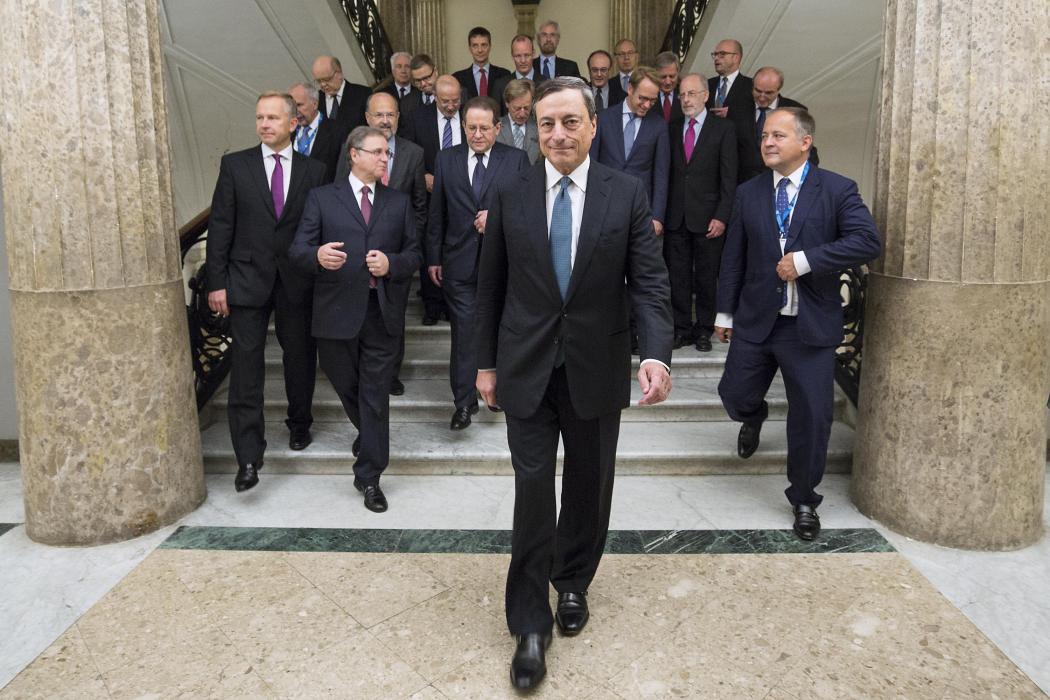If markets rebounded Friday after the sustained selloff on fresh “stimulus” hopes, then one would have to wonder immediately what the background fundamentals might be. Setting aside all notions of past “stimulus”, the call for more would seem to suggest, quite strongly, something far, far less than desirable.
Yet, in the same breath, economists and brokerage firms would have it both ways; the market is up because there may be more “stimulus” and also that the market is overly pessimistic. It can’t be both, because if there might be more monetary policy effort it isn’t markets that are psychologically inbounded, Jeffrey P. Snider wrote for Seeking Alpha.
The fact that European Central Bank’s quantitative easing was ever done meant conclusively that the long-term refinancing operations (and all the other various add-ons) achieved nothing; QE is the same as the LTROs, therefore it would likewise be expected to achieve nothing. Sure enough, no matter where you look in Europe, you can’t find anything of QE, Snider said.
Despite worries about a global economic slowdown and falling oil prices punishing the markets so far this year, a global recession is not in JPMorgan’s outlook. “We think it’s really all about negative psychology right now, which seems to be self-reinforcing but not based on fundamentals,” said Gabriela D. Santos, vice president of JPMorgan Funds.
“We can’t, however, simply set all aside from before. The two constants throughout the economic period since the end of the last recession have been persistent monetary efforts and the obvious failure of them revealed through nothing more than their persistence.”
Friday happened to be the anniversary for the ECB’s QE which pretends as if it were some new and useful upgrade. They did massive LTROs at the start of 2012 and Europe fell back into recession anyway. They have narrowed the rate corridors, stuck Eonia, or Euro OverNight Index Average, further to nothingness and then pushed it negative with an increasing negative nominal floor, pushed forward with a third covered bond program and then an ABS program; and all of that only accomplished the “necessary” conditions for ECB QE.
A Lie
It started out last year on essentially a lie: “One could argue that this type of approach Draghi is using should have been applied much earlier, which would have gotten Europe on a similar kind of platform the US was on,” Stephen Schwarzman, chairman of the Blackstone Group LP, said in a Bloomberg Television interview at the World Economic Forum in Davos. “It is never too late to do the right thing.”
US asset gatherers appear to be very much enamored with QE in all its forms but only when it is actually termed “Q” with “E.”
“We’ve seen over the last few years you have to trust in Mario,” Laurence Fink, chief executive officer of BlackRock Inc., said in Davos. “The market should never, as we have seen now, the market should not doubt Mario.”
If that is the case, then “we should easily find the fruits” of QE readily apparent in all things Europe. The LTROs were massive, but if QE is truly different than there should be no doubt at all of its imprint–and not just any inscription, but in exactly the areas and places it was promised to go and solve. The ECB announcement from January 22, 2015, leaves no doubt.
The governing council took this decision in a situation in which most indicators of actual and expected inflation in the eurozone had drifted towards their historical lows. As potential second-round effects on wage and price-setting threatened to adversely affect medium-term price developments, this situation required a forceful monetary policy response.
Monetary Policy
Asset purchases provide monetary stimulus to the economy in a context where key ECB interest rates are at their lower bound. They further ease monetary and financial conditions, making access to finance cheaper for firms and households. This tends to support investment and consumption, and ultimately contributes to a return of inflation rates towards 2%.
Though the program did not start actual purchases until last March, the CPBB3 (covered bonds) had already “bought” €37.2 billion ($40.1 billion) by this announcement. There were also indications that the financial markets in Europe were gearing up for the endeavor, with lending to non-bank financial firms just surging in December 2014 as financial firms loaded up to front the ease of central bank premium buying.
No Separation
Unfortunately, so ends our detection of QE in Europe. If it ultimately contributes toward the ECB’s goal of 2% inflation, it just cannot be found a year later. Economists and policymakers may be quick to dismiss that elongated separation as the beguiling work of oil prices, but again QE is supposed to be “forceful”; an effort so enormous and powerful that it shall overcome all impediments no matter how nefarious or stubborn. That is how central bankers who use it make it sound at least when it starts, that nothing can stop monetary policy when Q meets up with E.


